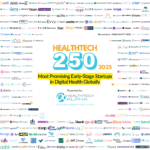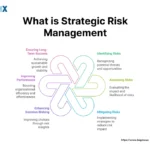As we move through the second half of 2025, the U.S. economy stands at a critical crossroads—resilient yet restrained, growing but unevenly, and driven by innovation yet challenged by global volatility. The macroeconomic signals offer a complex mosaic: cooling inflation, steady job creation, volatile housing markets, and surging tech-led productivity.
This Growth Watch report provides a deep dive into the current U.S. economic outlook, analyzing key indicators, sector trends, policy influences, and the strategic shifts investors and businesses should be watching.
The State of the U.S. Economy in 2025: Snapshot
Key Metrics (as of July 2025):
- GDP Growth (Q2 Annualized): 2.4%
- Unemployment Rate: 3.9%
- Inflation (CPI YoY): 3.8%
- Federal Funds Rate: 5.25%
- Consumer Confidence Index: 108.5
- S&P 500 YTD Return: +12.6%
- U.S. Dollar Index (DXY): Moderately strong
Despite headwinds from high interest rates and geopolitical uncertainty, the U.S. economy is growing modestly, underpinned by a strong labor market, steady consumer spending, and explosive growth in tech and renewable sectors.
Key Drivers of U.S. Economic Growth in 2025
1. Tech-Led Productivity Surge
Generative AI, automation, and digital platforms are fueling a new wave of economic efficiency. From healthcare to logistics to legal services, U.S. businesses are leveraging technology to reduce costs and scale faster.
- AI adoption is boosting productivity by 1.5–2.0 percentage points in certain industries.
- Tech-heavy states like California, Texas, and North Carolina are outperforming national growth averages.
2. Resilient Consumer Spending
Despite higher borrowing costs, U.S. consumers continue to spend—especially on:
- Travel and experiences (up 14% YoY)
- Health and wellness
- Tech gadgets and smart home upgrades
Strong wage growth (average hourly earnings up 4.1% YoY) is helping households manage inflation.
3. Government Investment in Infrastructure and Clean Energy
Thanks to the Infrastructure Investment and Jobs Act and the Inflation Reduction Act, public and private capital is flowing into:
- EV charging networks
- Smart grids
- Semiconductor fabs
- Clean energy projects
Federal contracts and tax incentives are stimulating thousands of new jobs across the country.
4. Energy Sector Diversification
The U.S. is balancing traditional energy exports with booming renewables and energy storage.
- Solar and wind generation up 19% in the first half of 2025
- LNG exports remain robust amid global demand
- Oil prices stable at $78–$84/barrel range, reducing volatility
Challenges Tempering Growth
1. Sticky Core Inflation
While headline inflation has cooled from 2022–2023 peaks, core inflation remains stubborn, especially in:
- Housing (rents still rising in major metros)
- Medical services
- Education
This continues to influence Fed policy, keeping interest rates elevated.
2. High Interest Rates
- Mortgage rates above 6.8% have slowed housing demand.
- Business borrowing is expensive, especially for startups and small enterprises.
- Auto loans and credit card delinquencies are ticking up slightly.
3. Geopolitical Risks and Global Slowdowns
- China’s economic deceleration is affecting U.S. exports.
- Conflicts in Eastern Europe and the Middle East are pressuring energy supply chains.
- Tensions in the Taiwan Strait remain a concern for tech manufacturing.
Sectoral Growth Outlook
| Sector | 2025 Performance | Growth Drivers |
|---|---|---|
| Technology | ★★★★★ | AI, cloud computing, automation |
| Healthcare | ★★★★☆ | Aging population, HealthTech, biotech |
| Clean Energy | ★★★★☆ | IRA subsidies, EVs, solar demand |
| Consumer Discretionary | ★★★☆☆ | Travel, digital goods, luxury |
| Financial Services | ★★★☆☆ | Digital banking, M&A, resilient markets |
| Real Estate | ★★☆☆☆ | High rates, softening demand |
| Manufacturing | ★★★☆☆ | Domestic reshoring, EV and chip production |
| Retail | ★★☆☆☆ | Price sensitivity, mixed spending |
Real Estate and Housing: Cooling but Not Crashing
The U.S. housing market has seen a slowdown in transaction volume, but prices remain high due to tight inventory.
Key Observations:
- New construction is stabilizing but concentrated in Sun Belt states.
- First-time homebuyers are priced out in many metros due to high mortgage rates.
- Multi-family and build-to-rent communities are growing fast.
2025 may be a year of stabilization, not correction, with affordability remaining a top issue.
Labor Market: Robust but Normalizing
The post-pandemic hiring boom is moderating into sustainable job creation:
- Sectors hiring most: healthcare, AI/tech, logistics, green construction
- Labor participation: 63.2% (highest since pre-COVID levels)
- Wages rising, but growth is slowing compared to 2023 peaks
Emerging Trends:
- Remote and hybrid work are now the norm in knowledge sectors.
- More Americans are working second jobs or freelancing amid inflation.
- Skilled trades and AI-adjacent roles are seeing wage premiums.
Investment and Stock Market Trends
The U.S. stock market has shown strong performance in 2025, led by:
- AI and Tech Giants: Nvidia, Microsoft, Alphabet
- Green Energy Leaders: Tesla Energy, First Solar
- Healthcare Innovators: Moderna, Illumina, Tempus
Key Investor Themes:
- ESG and sustainability are maturing, with real performance metrics.
- Growth investing is returning cautiously as inflation moderates.
- IPO activity is picking up in sectors like HealthTech and ClimateTech.
Crypto remains volatile, but stablecoins and tokenized assets are gaining traction in institutional circles.
Growth Trends to Watch in H2 2025 and Beyond
1. The AI Productivity Revolution
Generative AI is being embedded into enterprise software, education, medical diagnostics, customer service, and even agriculture. U.S. businesses adopting AI are seeing 5x ROI on average.
2. Regional Growth Disparities
Cities like Austin, Raleigh, Salt Lake City, and Denver are growing rapidly due to tech jobs, lower taxes, and pro-business policies.
Meanwhile, some coastal cities face outmigration and affordability crises.
3. Supply Chain Realignment
American manufacturers are reshoring production—especially for:
- Semiconductors
- Critical minerals
- Pharma ingredients
This trend will boost domestic industry but may raise short-term costs.
4. Digital Health and Longevity Economy
Startups in telemedicine, biotech, personalized nutrition, and senior wellness are attracting record VC investment.
The aging U.S. population is creating new demand for HealthTech, insurance innovation, and age-friendly financial services.
Policy and Regulation: Key Developments
1. Federal Reserve
- Holding rates steady at 5.25% unless inflation reaccelerates
- Focused on achieving soft landing while avoiding over-tightening
2. Tax and Corporate Policy
- Corporate tax increases are being debated ahead of the 2026 sunset of TCJA provisions
- Carbon pricing and climate tax credits expanding under bipartisan momentum
3. Upcoming 2026 Midterms
With an eye on political shifts, markets may become volatile ahead of the midterms—especially around healthcare, tech regulation, and foreign policy.
Conclusion: The U.S. Outlook Is Moderately Bullish, but Fragile
In 2025, the U.S. economy is resilient but facing complex risks. The post-pandemic recovery is evolving into an era of structural transformation driven by innovation, clean energy, demographic shifts, and digital infrastructure.
The challenge ahead is not growth alone, but sustainable, equitable, and inclusive growth that can withstand inflationary shocks, geopolitical uncertainty, and climate risk.
Final Growth Watch Recommendations
For Investors:
- Diversify into AI, clean energy, and digital health
- Stay cautious on interest-sensitive sectors like REITs and autos
- Watch inflation data and Fed signals monthly
For Businesses:
- Double down on automation and productivity tools
- Tap government incentives for infrastructure and energy upgrades
- Recruit for future-ready skills: data science, AI ops, clean energy trades
For Policymakers:
- Balance innovation with regulation in AI and tech
- Promote affordable housing and childcare to boost labor participation
- Ensure energy transition doesn’t leave behind fossil fuel-dependent regions


